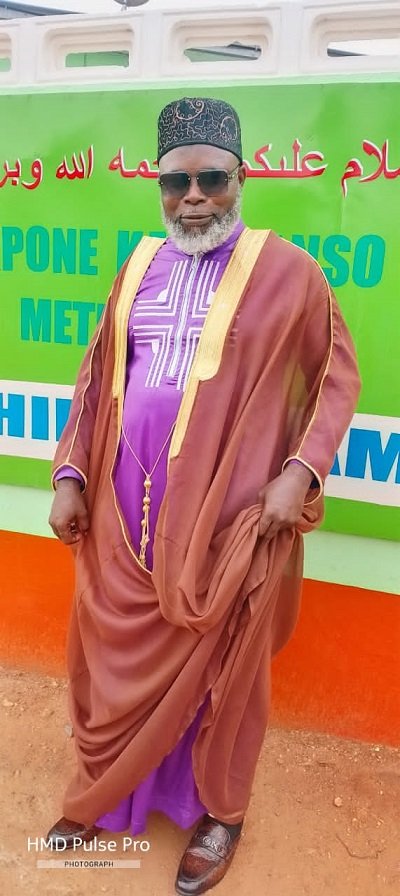Fruitful Living
Kingdom of God (Part 1)

But seek first the kingdom of God and his righteousness, and all these things will be added to you. (Matthew 6:33)
INTRODUCTION
The concept of the Kingdom of God, also known as the Kingdom of Heaven, is a central theme in Christianity. It refers to the reign or rule of God over all creation, both in the present and in the future. The Kingdom of God is not limited to a specific physical location or realm, but rather encompasses the spiritual and moral realms where God’s will is acknowledged and followed.
OLD TESTAMENT
God rules sovereignly over all His works as King. He desires His rule to be acknowledged in a bond or relationship of love, loyalty, spirit, and trust. Not surprisingly, then, one of the central themes of the Old Testament is kingdom through covenant.
This theme is revealed on the first page of Scripture, when God creates man in His own image. According to the grammar of the original text, ruling over the creatures in verse 26b is a result of creating man in the divine image. Then God said, “Let us make mankind in our image, in our likeness, so that they may rule over the fish in the sea and the birds in the sky, over the livestock and all the wild animals.”
The fact that mankind is male and female prepares us for the command to be fruitful, and the fact that mankind is the divine image prepares us for the command to rule over the creatures.
The fact that mankind is male and female in and of itself has nothing to do with the divine image. Instead, we should understand the divine image according to the background of the ancient Near East, where the setting up of the king’s statue was the equivalent of the proclamation of his dominion over the area in which the statue was erected. Accordingly, man is set in the midst of creation as God’s statue. He is evidence that God is the Lord of creation. Man exerts his rule not in arbitrary despotism but as a responsible agent, as God’s steward. His rule and His duty to rule are not autonomous; they are copies. Hence, the concept of the kingdom of God is found on the first page of the Bible. Adam begins to rule the world under God by naming everything created on the earth, just as God ruled by naming everything created in the heavens.
Careful attention must be paid to the language of the promises given to Abraham in Genesis 12 that are later incorporated into the covenant made in Genesis 15. The first promise that God gives to Abram is that He will make him a great nation. The last promise is that in Abram, all the clans or families of the earth will be blessed. God speaks of Abram as becoming a great nation through three considerations:
1. The term “nation” emphasises a people as a political entity defined by cultural, ethnic, geographical, or social factors.
2. In 12:3, the nations of the world are not called “nations” but rather “clans” or “families”. The term family emphasises a people with no real political structure and in which no system of final governmental headship or rule operates.
3. The background to Genesis 12 is chapter 11. There we have the history of Babel, where we see complete confidence and naive optimism about human achievement and effort. Man is at the centre of his world, and he can achieve anything. This philosophy comes under divine judgement. By contrast, Genesis 12 presents us with a political structure brought into being by God, with God at the centre and God as the governmental head and ruler of that system.
In other words, we have the kingdom of God brought into being by the promises to and covenant with Abraham.
When Abram’s family does become a nation, God initiates with them the Sinai covenant or law of Moses as a means for the people to be rightly related to God, to each other as God’s true humanity, and to the creation as His stewards. Therefore, the covenant is the means for establishing His Kingdom. The book of Judges proves that although each person did what was right in his own eyes, nonetheless, the Lord ruled over His people as King. Later, God rose up a king after His own heart and made a special covenant with David. The Davidic Covenant was God’s king seeking to bring the people of God, and indeed all the nations, under this rule made explicit in the covenant. Thus, the king was the mediator of the covenant and the means of extending God’s rule.
When the people failed to abide by the covenant, the prophets and the wise men were sent by God to call the people back to the covenant, the terms of God’s rule. Zephaniah, for example, based his warnings on the covenant as found in Deuteronomy.
Zephaniah 1:2: “I will sweep away everything from the face of the earth,” says the Lord, and Deuteronomy 32:22: My anger blazes forth like fire and burns to the depths of the grave. It devours the earth and all its crops, and it ignites the foundations of the mountains.
Moreover, the literacy structure of Zephaniah is chiastic, with chapter 2:11 as the centre of the book: “The nations on every shore will worship Him, everyone in its own land.” Zephaniah’s theology, then, can be summed up by the theme, kingdom through covenant.
Although the prophets sought to bring the people back to the covenant, the Sinai Covenant (the law of Moses) failed to achieve the goal of establishing God’s kingdom because it did not and, in fact, could not guarantee the obedience of the people of God. Hence, the prophets begin to speak of a new covenant in which God’s rule is guaranteed by an obedient people. As the failure of the Davidic line of kings became evident in history, the hope for a future king came more and more to the fore, along with the promise of a new creation—new humanity in a new heaven and a new earth.
The Old Testament ends (in the Hebrew Canon) with Chronicles, a book that focuses on good kings as the ideal of the future Messiah, in whom Yahweh will be truly Lord over His people and over all His creation. So the last words of the Old Testament call for a temple builder from among the people to make this hope a reality—likely the Messiah Himself.
“This is what King Cyrus of Persia says: “The Lord, the God of heaven, has given me all the kingdoms of the earth. He has appointed me to build him a Temple in Jerusalem, which is in Judah. Any of you who are his people may go there for this task. And may the Lord your God be with you!” (2 Chronicles 36:23)
STAY BLESSED!
By Dr. Joyce Aryee, the author
For further inquiries, please contact us on Tel. Nos. 0243588467 or 0268130615
Email: saltnlightministries@gmail. com
Website: saltandlightministriesgh. org
Fruitful Living
Eid-ul-Adha: A living legacy of faith, sacrifice, and devotion

We begin in the name of Allah, the Most Merciful, the Most Compassionate. We praise Him, seek His help and forgiveness, and seek refuge in Him from the evils of our souls and the wrongs of our actions.
May peace and blessings be upon the Prophet Muhammad (peace be upon him), his family, his noble companions, and all those who follow his path until the Day of Judgment.
Understanding the essence
of Eid-ul-Adha
Eid-ul-Adha, the Festival of Sacrifice, is one of the two major Islamic celebrations observed by Muslims across the world.
It commemorates the unwavering submission of Prophet Ibrahim (Abraham, peace be upon him) to Allah’s command when he was prepared to sacrifice his beloved son Isma’il (Ishmael, peace be upon him). Allah, in His infinite mercy, intervened and replaced the son with a ram, thus honouring Ibrahim’s sincerity and faith.
This moment of sacrifice is recorded in the Qur’an: “Then when they had both submitted and he put him down upon his forehead, We called out: ‘O Ibrahim! You have fulfilled the vision.’ Indeed, We thus reward the doers of good.” (Surah As-Saffat, 37:103–105)
This act of obedience is not merely a historical account. It is a living symbol that forms the essence of Eid-ul-Adha.
Ibrahim (A.S): The Architect
of Submission
Before the moment of sacrifice, Prophet Ibrahim and his family played critical roles in establishing Islam’s foundational pillars:
1. The building of the Ka‘bah
Prophet Ibrahim and his son Isma’il were chosen to construct the Ka‘bah, the sacred House of Allah in Makkah. The Qur’an records this noble moment:
“And [mention] when Ibrahim was raising the foundations of the House and [with him] Isma’il, [saying], ‘Our Lord, accept [this] from us. Indeed, You are the Hearing, the Knowing.’”
(Surah Al-Baqarah 2:127)
This structure remains the spiritual centre of Muslim worship, facing which over a billion Muslims direct their daily prayers.
2. The struggle of Hajar (Hajara) between Safa and Marwa
The mother of Isma’il, Hajar (Hajara), exemplifies a profound lesson of patience and faith. Left in the barren valley of Makkah with her infant, she ran between the hills of Safa and Marwa, desperately searching for water. Her perseverance was rewarded when the well of Zamzam sprang forth at the feet of her baby.
Her sincere struggle is now ritualised in Hajj as the Sa‘i between Safa and Marwa—a reminder of the role of women, the power of du‘a, and the value of trust in Allah’s provision.
Sacrifice at Mina and the
Rites of Jamarat
During Hajj, pilgrims reenact Ibrahim’s confrontation with Shaytan at Mina, where he rejected the devil’s temptation and cast stones at him. This act is now observed in Hajj as the ritual of stoning the Jamarat, symbolising the rejection of evil, temptation, and disobedience.
It is a vivid spiritual lesson: the path to Allah is one of resistance to distraction and sin, and one must be prepared to fight these forces with unwavering faith.
The essence of Arafat in Hajj
The Prophet Muhammad said:“Hajj is Arafah.” (Sunan al-Tirmidhi, 889)
Standing on the plain of Arafat, in deep humility and supplication, is the heart of Hajj. It represents the Day of Judgment, when all of humanity will stand before their Creator. The Prophet said: “There is no day on which Allah frees more people from the Fire than the Day of Arafah.” (Sahih Muslim, 1348)
For pilgrims, Arafat is a time of repentance, reflection, and renewal— and for non-pilgrims, fasting on that day is highly recommended.
Three core lessons from the
Sacrifice of Prophet Ibrahim
(A.S.)
1. Absolute obedience to Allah
Ibrahim’s willingness to sacrifice his son teaches that the essence of faith is unquestioning obedience to Allah. He prioritised divine command over emotion, logic, or comfort.
Takeaway:
In our lives, we must also be ready to put aside our desires, egos, and even attachments if they conflict with Allah’s instructions. This may involve sacrifices such as waking up for Fajr, staying away from haram income, or being truthful in difficult situations.
2. Sincere intention and inner sacrifice
The real essence of the sacrifice lies in the heart’s submission to Allah.
It is neither their meat nor their blood that reaches Allah, but it is your piety that reaches Him.”
(Surah Al-Hajj 22:37)
Takeaway:
Every act of worship should be grounded in sincerity. Whether it is prayer, charity, or sacrifice, what matters most is the purity of our intention.
3. Sacrifice for the greater good
The legacy of Eid-ul-Adha teaches us that sometimes, faith requires us to give up what we love for a greater purpose. Sacrificing wealth, time, or status in the path of Allah or for the benefit of others leads to spiritual elevation.
Takeaway:
Use your resources such as time, money, skills, for acts of benefit: support the poor, educate the young, assist the sick, and build your community.
Celebrating Eid-ul-Adha: A
Festival for all Muslims
Even for those who do not go on Hajj, Eid-ul-Adha holds immense significance. Muslims across the world participate in the act of Qurbani (sacrifice) to honor the tradition of Ibrahim (A.S.).
Types of animals and their
symbolism
Permissible animals include goats, sheep, cows, and camels. Each must meet a minimum age and be free of defects. The sacrificed animal is then divided into three parts: one for the family, one for relatives and friends, and one for the poor and needy.
This distribution reflects the spirit of sharing, compassion, and social responsibility—values at the heart of Islam.
The eternal message of Eid-ul-Adha
Eid-ul-Adha is not merely a celebration; it is a living tradition that calls us to:
• Submit like Ibrahim,
• Strive like Hajar,
• Sacrifice like Isma’il,
• Reflect like the pilgrims at Arafat.
May this Eid awaken within us a renewed commitment to obedience, sincerity, and compassion.
Let us make every Eid-ul-Adha a step forward in our spiritual journey, embodying the values of submission, sacrifice, and service to humanity. I wish every Muslim Eid Mubaarak
By Imaam Alhaji Saeed Abdulai
(Kpone Katamanso Metropolitan Chief Imaam)
Fruitful Living
Steps taken by government to combat illicit drugs (Final part)
The Minister for the Interior, Muntaka Mohammed-Mubarak, has reaffirmed the government’s commitment to combating drug abuse and illicit trafficking for a safer environment which would
go a long way to make Ghana a drug-free country. 3News.com (2025)
Solutions to Illicit Drugs from the Islamic perspective
are comprehensive and emphasise of both prevention and treatment:
Tarbiyah (Islamic nurturing): Instilling strong Islamic values from childhood through Qur’anic education, regular prayer, and association with righteous companions.
Community preaching (Da’wah): Imams must consistently raise awareness during khutbahs and Islamic programs about the dangers of drugs and the beauty of a sober, productive life.
Faith-based rehabilitation: Mosques and Islamic centers can partner with medical institutions to offer Qur’an therapy, spiritual counseling, and structured recovery programs.
Islamic youth clubs: Providing youth with halal entertainment, mentorship, and purposeful engagement can steer them away from harmful peer groups.
Zakat and Sadaqah: Channelling funds to support families of victims and establishing centres for rehabilitation.
Role of Parents, Society, Muslim Chiefs and Imams:
Parents must be vigilant and provide emotional support. A loving, nurturing home reduces a child’s vulnerability to drugs.
Society should de-stigmatize addiction. Drug users should be seen as patients needing healing, not criminals deserving rejection.
Muslim Chiefs must lead community campaigns, setting moral examples and supporting policy enforcement.
Imams must be more than religious leaders—they must become counsellors, educators, and advocates. Their leadership can shift public perception and guide collective action.
Conclusion
Illicit drugs pose one of the most dangerous threats to our society, undermining our religious values, harming our youth, and destroying our future. The Islamic position is clear and
Unequivocal: such substances are forbidden due to their destructive consequences on all aspects of life. Islam does not merely condemn the act but calls for a holistic response—spiritual, social, and structural.
As a society, particularly as Muslims, we must rise to confront this crisis with faith, compassion, and commitment. We must not only preach against drugs but actively work to rehabilitate victims, educate the next generation, and partner with public institutions to create a society of wellness and righteousness.
Recommendations
1. Introduce Islamic drug awareness education in madrasas and public schools, using Quran and Hadith-based materials to instill moral responsibility.
2. Create partnerships between the Ghana Narcotics Control Commission, Ghana Health Service, and Muslim organisations to develop culturally sensitive rehabilitation centres.
3. Train Imams and teachers in basic mental health and drug abuse counselling to serve as front-line responders in communities.
4. Utilise Friday sermons (khutbahs) nationwide to address the dangers of drug abuse periodically and provide practical steps for prevention.
5. Encourage community surveillance, where parents, chiefs, and youth groups report dealers and suspicious activities to the authorities.
6. Establish mentorship programmes in every Muslim community where successful, drug-free role models mentor youth.
7. Form interfaith coalitions, working across religious lines to tackle the drug menace as a national threat rather than a religious issue.
8. Provide job skills training for rehabilitated victims, helping them reintegrate into society and live dignified, self-sufficient lives.
By Imam Alhaji Saeed Abdulai, the Author







